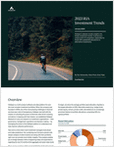By
Washington, D.C.
 From the main platform at this years AALU meeting in Washington, D.C., the chief executive officers of two financial services giants shared their views of what the future holds for the industry.
From the main platform at this years AALU meeting in Washington, D.C., the chief executive officers of two financial services giants shared their views of what the future holds for the industry.
Sy Sternberg, chairman, president and CEO of New York Life, and Arthur Ryan, chairman and CEO of Prudential Financial discussed their respective positions on demutualization, distribution, industry growth, technology and regulatory changes, via satellite.
The first topic discussed was the demutualization of insurance carriers. While Prudential recently went public, New York Life has publicly committed to its mutual organizational structure. “We made that decision for a number of reasons,” said Sternberg.
One of the more important reasons Sternberg cites is the desire to avoid the conflicting priorities that exist between policyholders and what would be stockholders.
“The most important priority for a life insurance company is that were going to be there 20-30 years from now to pay a claim,” said Sternberg.
“People give us money and we dont give them anything but a promise that 30 years from now were going to pay a death claim, or start a retirement benefit, or pay a nursing home bill,” he said.
Sternberg explained that in order for his company to keep that promise, he has to ensure that its being managed for the long term.
“If we were a public company with shareholders, their priorities are not 30 years from todaytheyre priority is next quarter,” he said.
Ryan explains that the ability to limit the number of stakeholders a company has is becoming more and more difficult in todays environment.
“In our case I feel the benefits of becoming a public company far outweighed the necessity of balancing different constituencies,” said Ryan.
“Obviously there are other challenges–youre placed in an environment where quarterly earnings are king. You have to be far more responsive in terms of the constituencies that you now have to deal with, but I think those are modest relative to the benefits of demutualizing,” said Ryan.
Some of the benefits Ryan discussed are access to capital and new ways to compensate employees, but Ryan contends that the principal reason for Prudentials demutualization was due to the changes in the buying behavior of their customers.
Addressing this change in consumer behavior, Ryan explained that people today are looking for a financial advisor who is a knowledgeable, well-educated, relationship manager who can offer a wide range of products.
“I believe that the individual financial advisor is a very rapidly growing capabilityone that clients reach out to and one that we have to serve well,” he said.
But many people still feel that technology will replace the insurance practitionerspecifically, direct sales through the Internet. Both executives, however, felt this was not the case, and that the future is not going in that direction. Rather, Internet technology can be utilized by producers and carriers to improve customer service and maintain closer relationships with clients, prospects, and carriers.








 April 21, 2002 at 08:00 PM
April 21, 2002 at 08:00 PM










